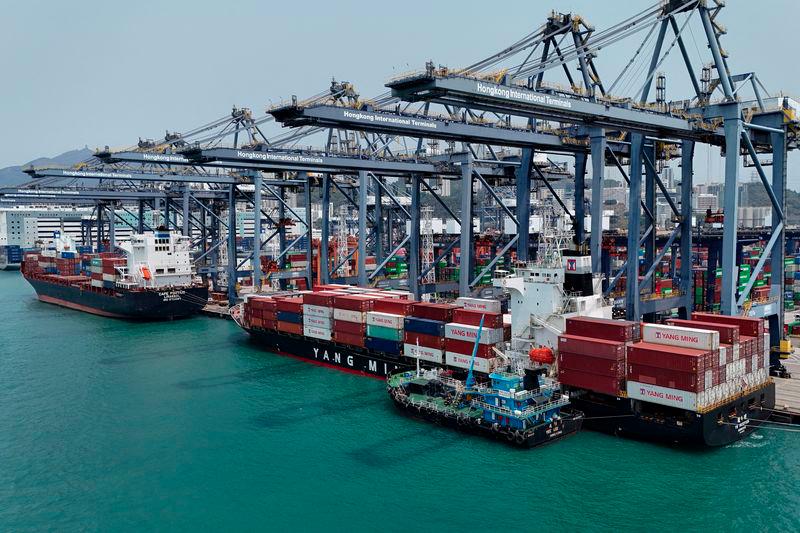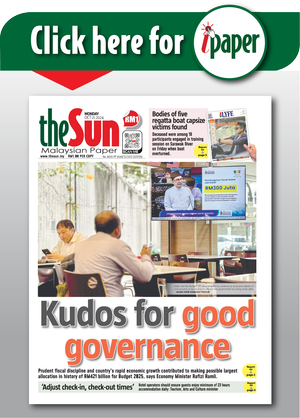DONGGUAN: Chinese outdoor furniture maker Jin Chaofeng set up a factory in Vietnam last July to escape higher U.S. tariffs. Now he is looking to close it, as Washington imposes steep levies on Hanoi and the rest of the world.
“I’ve done all this work for nothing,“ Jin said, adding that foreign trade would become a “very thin-margin” business, just like the demand-starved Chinese market.
No other country comes close to matching China's annual sales of more than $400 billion in goods to the United States each year. President Donald Trump just hiked tariffs by an extra 34 percentage points on those goods.
His world-wide tariffs strike at the core of Chinese exporters' two main strategies to blunt the impact of trade war: moving some production abroad and increasing sales to non-U.S. markets.
The sweeping tariffs could deal a lasting blow to global demand. China is more exposed to the risk of shrinking world commerce than any other nation, with economic growth last year relying heavily on running a trillion-dollar trade surplus.
ALSO READ: Indian pharma stocks ‘breathe easy’ on US tariffs exemption
Kaiyuan Securities expects the new tariffs could slash Chinese exports to the United States by 30%, cut overall exports by more than 4.5%, and drag economic growth by 1.3 percentage points.
“It’s an all-round blockade against China,“ said Yuan Yuwei, hedge fund manager at Water Wisdom Asset Management, who said he was bullish on gold and shorting China and Hong Kong stocks as a result. Ahead of Trump’s re-election in November, many Chinese manufacturers were already relocating some production facilities to Southeast Asia and other regions.
Now their new factories face tariffs of 46% in Vietnam, 36% in Thailand and at least 10% anywhere else. As Trump raised tariffs on China by 20 percentage points in February and March, the global salesforce of its manufacturers was in a rat race for new export markets in Asia, Latin America and elsewhere.
Now these economies are taking their own tariff hit, probably reducing their purchasing power, and their demand for Chinese goods. Analysts say Washington's new measures are the type of punch and clinch on Beijing that could derail China's economic growth and its efforts to fight deflation.
ALSO READ: Europe hits out at Trump tariffs, keeps door open for talks
“This will make it impossible for the 5% growth target to be achieved,“ said Zhiwu Chen, a finance professor at HKU Business School.
“China cannot get out of this deflationary situation anytime soon. This new tariff increase is definitely making things worse.” The external demand shock is feeding back internally, as producers are under pressure to cut costs.
Jerry Jiao, whose factory in China makes cast-iron bathtubs, said he had already “laid off some employees, reduced management costs, and cut down on various expenses” this year.
Li Zhaolong, the manager of a clothing factory in the southern city of Guangzhou, said he needed to rely more on domestic orders, but worried about subdued demand.
“You had one cake for one person before, but now five people want to eat it,“ said Li.
RISING BARRIERS?
In 2023, about 145 countries traded more with China than with the United States, an increase of nearly 50% from 2008, according to research by investment bank Jefferies.
That is a measure of China's success over decades in developing competitive industries under a world trade order the United States created, but which it now considers unfair and a threat to its own security.
“We still need to diversify our export markets, support exports and encourage businesses to focus more on domestic sales,“ said a Chinese trade policy adviser who spoke on condition of anonymity.
“The risk of a global recession is real,“ however, he warned, adding:
“If everyone submits, the United States will indeed profit, as if others are paying tribute. But if they resist and retaliate continuously, the U.S. economy won’t be able to handle it.”
ALSO READ: Japan trade minister says US tariffs ‘extremely regrettable’
For China, the other risk is that more of its trade partners will see its exporters competing ever more heavily on price in their markets and throw up trade barriers of their own to protect domestic industries.
“That is true both in Europe and many emerging market economies,“ said Louis Kuijs, S&P Global’s chief Asia economist.
Domestic factors also add challenges to any Chinese plan to double down on foreign trade. Many analysts say China's exporting prowess is also the result of government policies that disadvantaged households, leading to imbalances such as manufacturing overcapacity, slow domestic consumption and roads and bridges built to nowhere.
China’s “mercantilism has led to financial repression, offering households low returns on savings to create cheap finance for favoured industries,“ said Shamik Dhar, senior adviser at Fathom Consulting.
“This has fuelled rapid economic growth but also capital misallocation, property speculation, and financial sector fragility.”
MORE STIMULUS?
Analysts expect Beijing to announce more stimulus soon. The measures could range from central bank interest rate cuts and liquidity injections to exporter tax rebates, property market support and perhaps even higher budget deficit and debt issuance than flagged at an annual parliament meet in March.
Last month’s “restrained” stimulus measures “were a calculation, not an oversight,“ said Ruby Osman, China expert at the Tony Blair Institute for Global Change. “Beijing has purposefully kept more in reserve.”
A second policy adviser said cutting the funds banks are required to hold as reserves and reducing lending rates should be a priority for the second quarter, while more fiscal stimulus might come in the third.
“Without this Plan B, it is unlikely for China to reach the roughly 5% growth target this year,“ the adviser said. “What’s more, the finance ministry should prepare Plan C if Trump further hikes tariffs against China.”
ALSO READ: China says opposes new US tariffs, vows ‘countermeasures’
But key to mitigating growth and deflationary risks is what policies Beijing has in store to boost consumption, analysts said.
China has been pledging for more than a decade to shift its economic model away from investments and towards consumption-led growth. In parliament, its leaders made those promises even more loudly, without unveiling significant structural measures.
Global trade disruption makes those even more urgent, analysts said, although hopes for major structural reform remain low, in view of how painful that transition is likely to be.
Subsidies for consumer goods purchases and more support for childcare are possible, but broader welfare reform and radical changes to the tax system, land liberalisation and other policies to redirect resources to households from the state sector remain unlikely.
“We’ll likely see a doubling down on efforts to encourage domestic demand as a way to offset this expected shock to external demand,“ Nick Marro, principal economist for Asia and lead for global trade at the Economist Intelligence Unit.
“But there’s only so much the Chinese government can do.”









